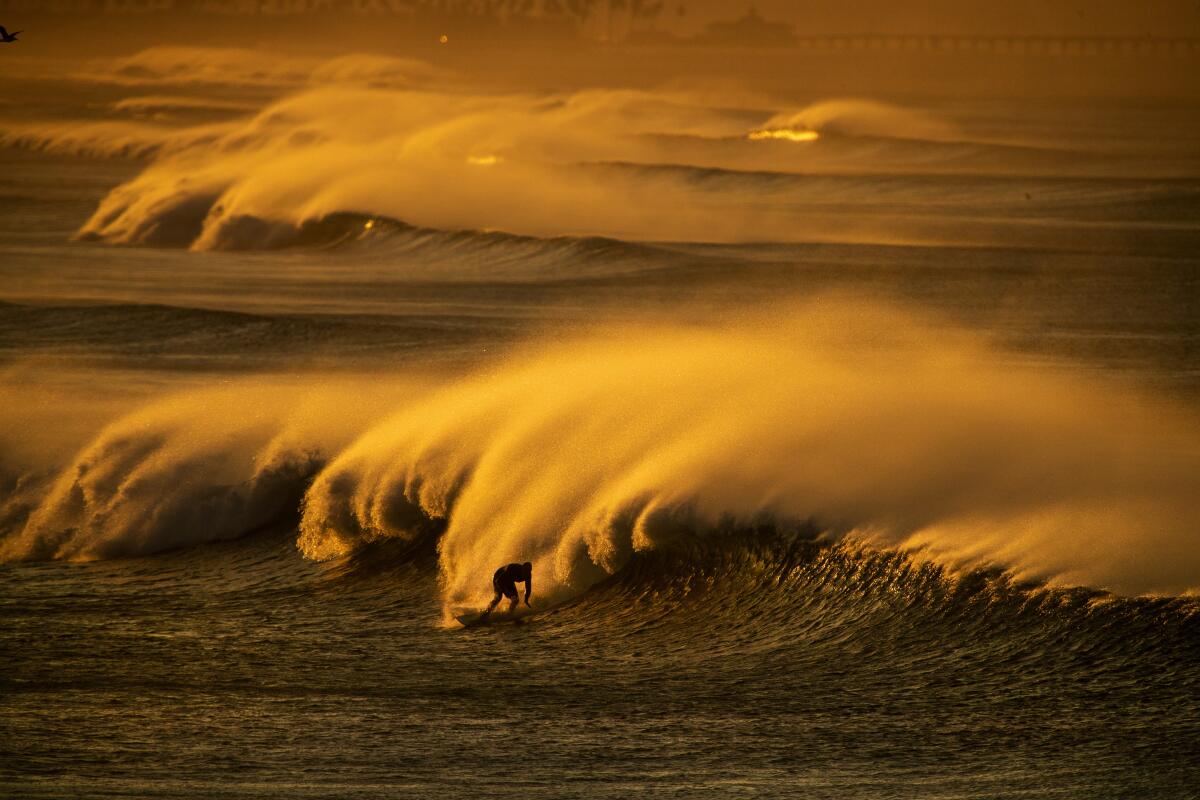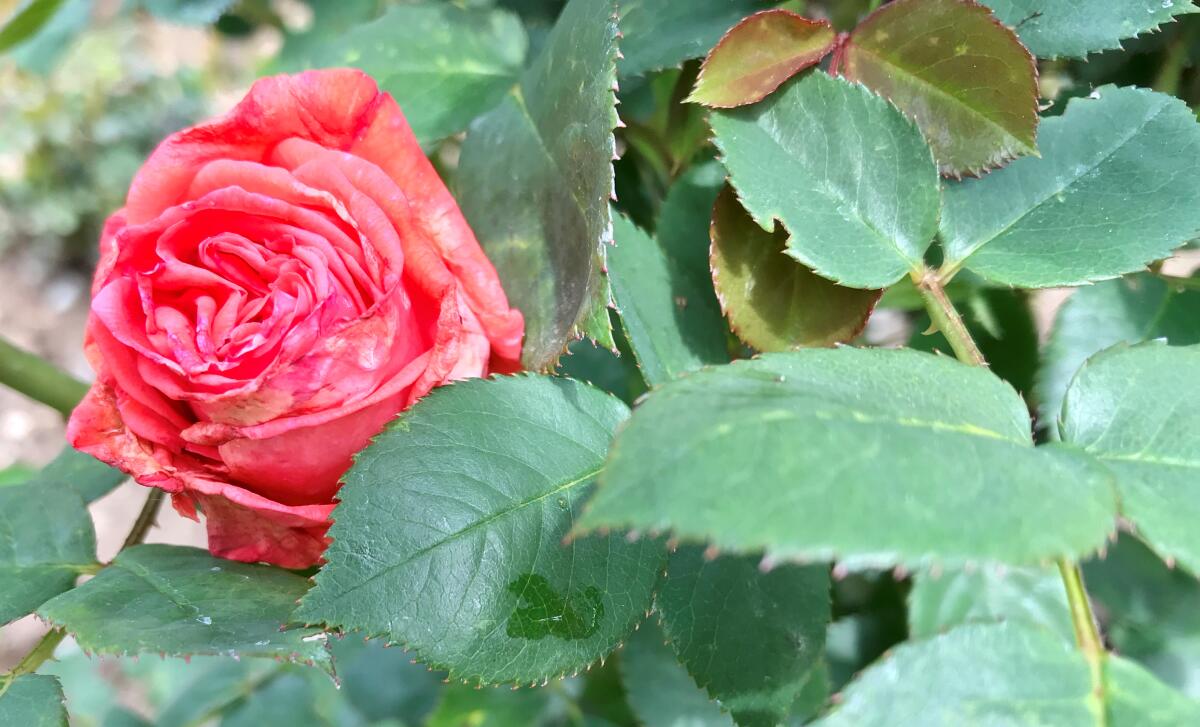Escapes: Amid travelers’ gloom, the sun also rises

- Share via
When I messaged Anne Harnagel, an assistant travel editor, that casinos in Las Vegas would close on Tuesday evening, she replied, “Is this the apocalypse?”
Not quite. But all of us have been whipsawed by the news in the last weeks, and this is just one more unexpected consequence.
Get inspired to get away.
Explore California, the West and beyond with the weekly Escapes newsletter.
You may occasionally receive promotional content from the Los Angeles Times.
Add to this the thousands of people whose lives and plans have been upended, and it’s a little overwhelming. Reader Sherrie Peters summed it up nicely: “I hate this virus.”
We do too. I’m Catharine Hamm, the travel editor for the Los Angeles Times, and the format for this week’s newsletter is a bit different. First, we’ll tell you some of what’s affecting travel providers. Then we’ll tell you where to find some much-needed respite.
Status updates on places we love
You can read about what the pandemic has done to Las Vegas, ski resorts, the cruise industry and national and California state parks, among other articles you will find at latimes.com/travel. Sometimes it’s hard to look away. But we urge you to, because...
You need a break
Here are some suggestions for a respite. Sharon Boorstin offers us one with her lovely, flower-filled, close-to-home day trips to see what nature has done to cheer us up.
Christopher Reynolds, Mary McNamara, Susan Spano and Chris Erskine will help you alter reality with their travel-influenced picks for music, TV shows, books and movies that will transport you around the world.
If you’re feeling an emptiness where travel used to be, take a gander at my On the Spot column that tells you how to fill that void with something other than boredom and frustration.
And in the End paper, which comes, not surprisingly, at the end, you may find a new way to look at the future.
Yes, there is a future. It will look different. We will be different. But the love of travel will still be at our center.
Enjoying this newsletter? Consider subscribing to the Los Angeles Times
Your support helps us deliver the news that matters most. Become a subscriber.
What we’re reading
This is a weird one, no bones about it: Brian Handwerk, writing for Smithsonian, describes a 25,000-year-old structure made from the bones of about five dozen woolly mammoths. This isn’t the first such structure but this one, on a Russian steppe, is noteworthy for its size. Sixty woolly mammoths make for a lot of building material.
I’ve long been an admirer of the work of astrophotographer Jack Fusco, and I happened this week to take a look at his videos again. They are a wow, especially “Wonder Endlessly,” partly because it’s three minutes of California skies at their most beautiful. If you watch one, you’ll want to watch others and admire his portfolio.
We need a break from the drumbeat of news, and here’s an adorable one, courtesy of Jessica Leigh Hester writing for Atlas Obscura. Golden Gate Park is happy to announce the arrival of five, 550-pound bouncing baby bison. Didn’t realize the park had a herd and have been missing that news since the 1890s when the first ones checked in.
Read and subscribe
The best way to keep up with the fast-moving coronavirus story is to subscribe to the Los Angeles Times.
Usually I also tell you to subscribe to our other newsletters (they’re free, and there’s also a coronavirus newsletter) and to write to us (travel@latimes.com) to tell us what’s on your mind.
Today, there is nothing more important than having the facts so you can make smart decisions. We thank you for supporting us; we will continue to support you.
End paper
One of the challenges of being a journalist — for me, anyway — is trying to hold steady in times of turmoil. Sometimes it’s a major horrible event that rattles me, and sometimes it’s the repercussions of that event. But more often I am undone by unexpected wisdom that lends perspective.
In preparation for my story on how to cope with boredom when the thing you love has been taken away from you — travel, in this case — I spoke with several mental health professionals.
An interview with Dr. Howard Forman, a psychiatrist with Montefiore Medical Center in New York, took an unexpected turn. He shared that his family had canceled its spring trip, an annual journey. He knows his children are disappointed but he said the counterbalance will come from memories and gratitude.
He will remind his children about trips they have taken in the past and how enjoyable they were. And he will remind them that they will travel again, and when they do, they will recall a time, perhaps, when they didn’t travel and be grateful that they can now.
In taking the long view, he reminded me that the current state of the world will not always be the state of the world.
By the end of the interview, my face was wet (good thing it was a phone interview), and I realized he had given me an emotional equation that, despite my advancing years, had never dawned on me: Memory plus gratitude forms a basis for hope.
So, yes, we’re all experiencing a different reality. Like thousands of people, I’m working from home. I don’t miss the commute but I do miss my colleagues. (Don’t tell them I said that.) I want to see my family in Virginia, Florida, Kansas and Washington, and I long to visit friends in the Bay Area and Oregon. I dream of long-hoped-for trips to Tanzania, New Zealand, Argentina and Hungary.
In the here and now, I am in the home office with my three assistants who, among them, have 12 legs and winter coats they are leaving behind, and catching the occasional peek out the window at my rose garden. And what appears? The first rose of spring, as if it were created just for me at this moment. Imperfect but perfect all the same.
Wherever you are, be safe and well, and know that we are here to welcome you home, whether it’s from the grocery store or, for now, the far reaches of your imagination.

Sign up for The Wild
We’ll help you find the best places to hike, bike and run, as well as the perfect silent spots for meditation and yoga.
You may occasionally receive promotional content from the Los Angeles Times.




